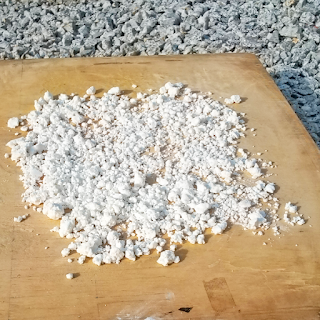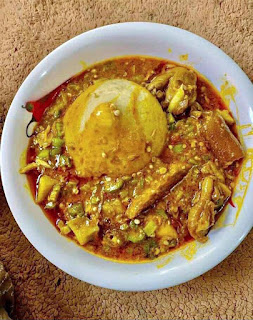One of the locally made food products that can be found in the market and probably the Ghanaian local or urban markets is tapioca. If you reading this article and
do not have much idea about what this is then here is the destination to explore all that there is to say about tapioca in simple and well to understand terms.
What is tapioca?
Tapioca is an edible product made from starch and it looks like crystals of salt but can also be in the form of small balls or round shapes and it is white in colour.
The starch used to produce it is the one obtained from cassava and it undergoes some preliminary preparations to make it ready for the product. We are going to explore the processes in detail for you to have a full knowledge of what goes into the production. Tapioca is consumed in diverse ways and used to prepare different foods as well which will all be discussed in here.
Extracting the cassava starch
Cassava is a root tuber and it is its root that has all the accumulated starch that we consume. A crop that is known widely as rich in carbohydrates. It is very wonderful the different products made from cassava tuber like gari, fufu, kokonte, tapioca among others. After harvesting cassava, it is peeled and ground into a dough. To be able to extract the starch that is needed here, one can do it two ways manually.
1) Take a clean white cloth, pour in some of the cassava dough and squeeze to bring out the water to collect in a bowl. This is done about two or three times to make sure much water is strained out of the dough.
The dough with little water is then used to cook banku or prepare gari.
2) The cassava dough with its plenty of water content is poured into a sack and tied at the mouth. Strong wood planks are then placed over a wide enough metallic bowl and the sack is placed over it. Weight is put on the sack using heavy cement blocks and it is left to drain mostly overnight and the water is collected.
After draining the water from the cassava, it is left to be still for some minutes and then the starch settles completely at the bottom of the container. The water on top is poured off and the starch is dried under the sun to make it completely dry.
The solidified starch when dried is now ready for use in making tapioca. The process of getting the starch becomes easy once the water has been drained from the dough and as it settles at the bottom of the container, it isn't any work removing it and drying to evaporate the water content inside.
Cassava starch is dried under the sun. Normally the starch lumps have to be broken down into smaller pieces and spread on a rubber or any flat surface to aid fast drying.
DIY, How tapioca is made
Dry starch under the sun to evaporate the moisture content out of it completely. As the starch settles it forms a very thick solid and when it is to be taken for drying, it is normally in big lumps and must be broken into smaller particles for complete drying. Mash the dried starch with the hands into powder fairly fine enough.
Put a frying pan over moderate heat or fire and then pour in the starch powder.
Tie a few numbers of broomsticks to stir as the preparation goes on.
The starch can be allowed to heat a little over the fire and then the next important thing that makes the tapioca what it is can then be done.
Sprinkle water gradually on the starch and stir with the broomstick. The sprinkling is done gradually and as it is being stirred, the starch powder begins to coagulate or form crystals. At this point the tapioca which is now looking like crystals of salt is poured into a container and after all the powder is used to prepare the tapioca, it is dried under the sun to make it hard and dry. After the starch is sprinkled with water and the crystals form, it can be observed that the crystals are soft and hence the need for drying which makes it very hard.
Let's explore some of the various ways tapioca is consumed and even though these might not be the only ways, you can try your own recipes per your creativity in food preparation.
Tapioca soaking
Gari is made from cassava dough whilst tapioca is made from the starch of cassava. This is very obvious in the colour or look of these two foods.
Ingredients
- tapioca
- sugar
- milk or milk powder
- groundnut
This list is not to be strictly followed but is just a sample list of what people normally use when trying to soak tapioca.Pour a hand or two fills of tapioca into a cup or bowl and add enough water. Leave to soften for about 10-15mins. Add sugar to taste, liquid milk or milk powder to add to the nutritional value since it is mainly carbohydrate.
The groundnut is also very much needed to supplement the whole thing with some protein.
Tapioca soaked in water looking yummy. Additional ingredients like groundnut, and milk were not left out because without them, it might not be very delicious to taste.
Tapioca pudding
What is tapioca pudding?
This is a porridge prepared using tapioca. Tapioca crystals come in big sizes or very small crystals and either of them can be used for the pudding because that does not limit or determine the final outcome.
The process...
- Put with water on fire and add salt.
- Allow to boil and then pour some amount of tapioca inside.
- Allow to boil very well until the crystals become soft.
- A very noticeable characteristic of cassava starch is its slimmy feel when boiled. This is how the pudding also looks like.
- Pour the boiled pudding in a cup and add sugar, groundnut and liquid milk or milk powder. The pudding can be taken with bread or a biscuit or choice. Remember to consume tapioca by preparing it as a pudding or soaking, try adding nutritious food ingredients to make it well-balanced before consumption because you must not over look the fact that it is a full blown starch.
How long can tapioca stay good for consumption?
This product can stay useful for months since it is moisture-free. Students going to the boarding house do carry it along because it can be eaten raw and it stays useful for months without any issue about spoilage.














Comments
Post a Comment
Share your views on this insightful content